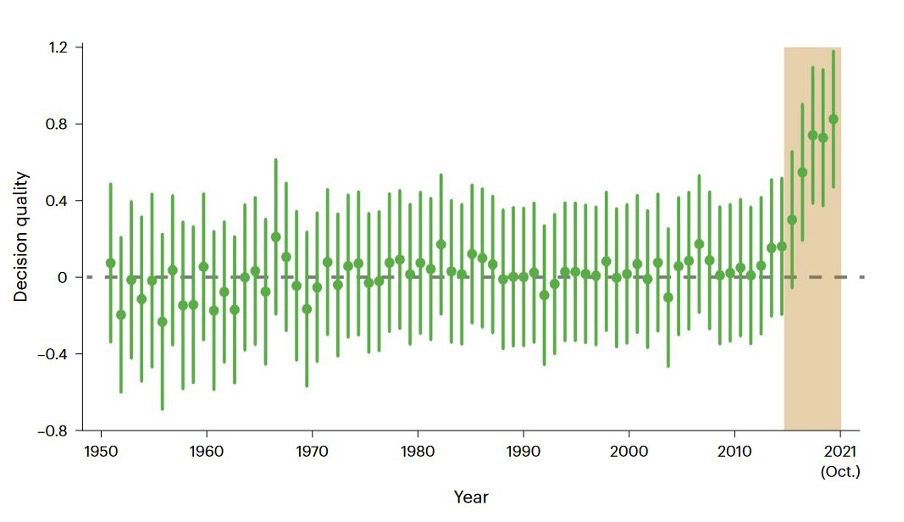This week, mob wife fashion takes a hit. Everyone sees eye to eye on some great new wheelchair tech. Humans are saying ‘Challenge Accepted’ to AI. And new research reveals Ireland is a nation of avid Internet users.
Mob Wife Fashion takes a hit

Every week, it seems the TikTok-style community announces a new trend. Tomato Girl Summer has died a death; the Clean Girl has married into the Mob. Your grandmother is coastal, your grandfather eclectic.
Mandy Lee, a NY-based style and trend forecaster (AKA @oldloserinbrooklyn), has beef with this endless cycle of consumerist TikTok trends. In a pointed TikTok, Mandy describes how “the 2020’s style throughline has been an endless pursuit of nostalgia where everything old is new again”.
Trends often hark back to fashions of the past, but what’s changed, according to Mandy, is how people are trying to achieve an “aspirational identity through consumerism”. You’re not a mob wife, Jessica- you’ve just bought a fur coat. Apparently, we’re now “blurring the lines between buying things and having an actual personality and people are more interested in naming a style (…) than building a unique identity.”
Someone should lighten up a little.
Each trend brings new opportunities for people to express themselves and expand their cultural references – it’s pretty much the definition of a trend. So, don’t mind her, Jessica – you look amazing! (But we do hope that fur is faux).
Wheelchairs level up

The much-awaited Kim-E electric wheelchair has finally rolled off the production line. If you can call it a wheelchair. The maker, Lithuania’s Chronus Robotics, describes it as a self-balancing personal mobility robot, and we don’t think the description is over-hyped.
A cross between a wheelchair, a Segway, and a cherry-picker, the Kim-E can raise the user to a standing height, face-to-face and eye-to-eye with non-wheelchair-users. And the device is steered by the user’s upper body movements, so it’s completely hands-free, too.
It’s more than a mobility device. It helps tackle the stigma of disability, which according to the Office of National Statistics in the UK, is one of the biggest challenges that wheelchair users face.
The Kim-E is true innovation, inclusive in the most meaningful way and we hope to see it in Ireland soon.
Go Humans!

This chart shows that humans are getting smarter. Thanks to AI.

It maps the quality of decision making by professional players of the strategy board game, Go. The beige bit at the end shows how that decision making suddenly got better in 2017, coinciding with the launch of Leela Zero, a powerful AI that mastered games such as Chess, Shogi, and Go.
Interestingly, the data maps only those moves made by humans that the AI itself didn’t recommend. In other words, it shows purely human decisions, but ones that were made by humans who have learned from AI.
Another interesting point is that the improvement coincides with the launch of the open-sourced Leela Zero, and not with its predecessor, DeepMind’s Alpha Zero.
AI nerds may remember that before the arrival of Large Language Models like Chat GPT, the biggest deal in AI was Alpha Zero, which taught itself to play Chess and Go, and within days was good enough to beat the most powerful engines. This was seen as a breakthrough for neural network AI, but DeepMind (owned by Google) didn’t publish the under-the-hood data that would allow players to see how Alpha Zero made its decisions in-game.
Enter Leela Zero, which was developed as an open-source project. This made all the difference. It’s not enough for Go players to simply see the moves made by AI. But with access to Leela’s data, players could examine its thinking, see how it evaluated different pieces in different situations, and learn from it.
No player will ever again be good enough to beat the best computers at these games, but we haven’t stopped learning, and it turns out we can use AI to teach us. Which is good, right?
See the full report here.
Land of saints and scrollers

Is Ireland addicted to the Internet? New figures from the Datareportal 2023 report show that there are 4.99 million internet users in Ireland. That’s 99% of the population, which puts us third highest globally.
What’s more, 80% of us are social media users. And 80% of us consider ourselves ‘digitally savvy’ (although, probably not the exact same 80%). However you look at it, that’s a lot of scrolling.
It’s hardly news that brands in Ireland need an online presence. What this data shows is that digital is perhaps the most inclusive, most far-reaching media in Ireland now. That’s a change worth noting.
